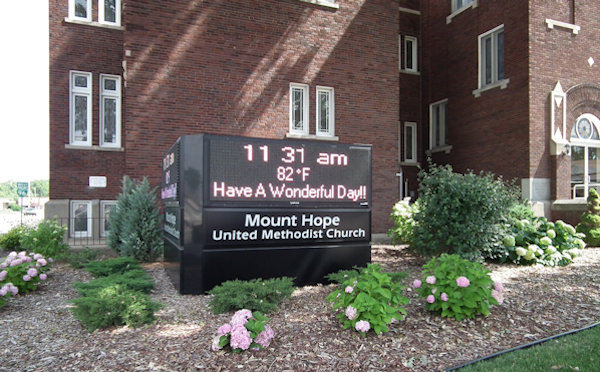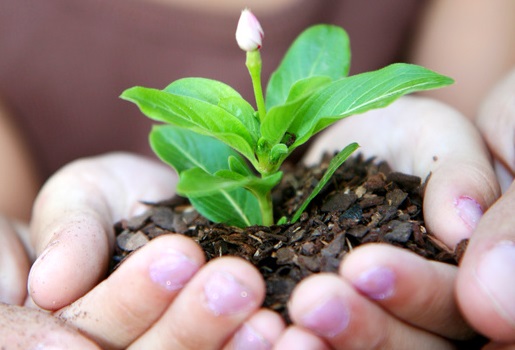This community project at Lansing: Mt. Hope UMC produces more than vegetables.
KAY DEMOSS
Senior Editor-Writer, Michigan Area
In 2016 Lansing Mt. Hope United Methodist Church established a community garden anticipating a harvest that goes beyond the usual bushels of vegetables.
When the ground was tilled and fertilized, Garden Team Leader, Julian Yewah, allocated 20% of the plot for use by Mt. Hope’s neighbors. Yes, healthy eating was a goal but the biblical principle of gleaning—sharing God’s bounty with others—was also behind the effort.
 A couple of grandparents living across the street from the garden, Bud and Brenda, are among those who not only got their green thumbs working but also helped other neighbors get involved. Bud grew up on the block and remembers that 20-some years ago a community garden also occupied that space. Mt. Hope member and one of the garden organizers, Mark Wardon, notes, “It appears history is repeating itself.”
A couple of grandparents living across the street from the garden, Bud and Brenda, are among those who not only got their green thumbs working but also helped other neighbors get involved. Bud grew up on the block and remembers that 20-some years ago a community garden also occupied that space. Mt. Hope member and one of the garden organizers, Mark Wardon, notes, “It appears history is repeating itself.”
Many hands, of Mt. Hope members and the church’s neighbors, have stayed busy through these spring and summer months. And in early June some more history was made as 12 United Methodists from across the State of Michigan put on garden gloves to assist this local project.
Just a few miles from the garden plot, the Michigan Conference of The United Methodist Church was meeting on the campus of Michigan State University June 8-13. For the first time, persons from the Detroit Conference (eastern Michigan and Upper Peninsula) and the West Michigan Conference were gathering in one spot.
Wayne Bank, Lay Leader of the Detroit Conference and a member of the UM Conference Program Team, said, “We wanted to do more than worship, conduct our business and collect offerings while we were in Lansing.”
Amy Schlusler, City of East Lansing Community Development Specialist, enabled that to happen. “We wanted,” Bank continued, “to help United Methodists visitors make a difference in the Lansing area. The Mt. Hope community garden was offered by event planners as one of five non-profit projects conference attenders could engage in on a Saturday afternoon of service.
It was Julie Lehman, Garden Project Coordinator of the Greater Lansing Food Bank, who made the actual connection between the state’s United Methodists and Mt. Hope. Five of the volunteers who worked the garden were United Methodist pastors and the other seven were lay persons, ages 38-79. They came to Lansing from as far north as Marquette and as far south as Tecumseh. “All were happy to help,” Bank said, “and each person was impressed with the participation of the refugees who are part of Mt. Hope’s family.”
Those assisting at the garden site, like the Rev. Jeremy Peters, were no strangers to community outreach. Pastor of Flint Court Street United Methodist Church, Peters and his congregation are an Emergency Water Relief Station for the city. Bank reflects that tending the soil in Lansing or providing clean water in Flint are all within the context of what Methodism’s founder, John Wesley, called “social piety.” “United Methodists are not only involved in acts of praise,” Bank said, “but works of mercy, as well. We love God and love neighbor wherever we can.”
In total over 90 United Methodists were involved at the five sites. Other scenes of activity included: the Environmental Stewardship Program at Harrison Meadows Park; Loaves and Fishes Ministries; Meals on Wheels/Tri-County Council on Aging; and Habitat for Humanity ReStore.
Last Updated on January 30, 2024

